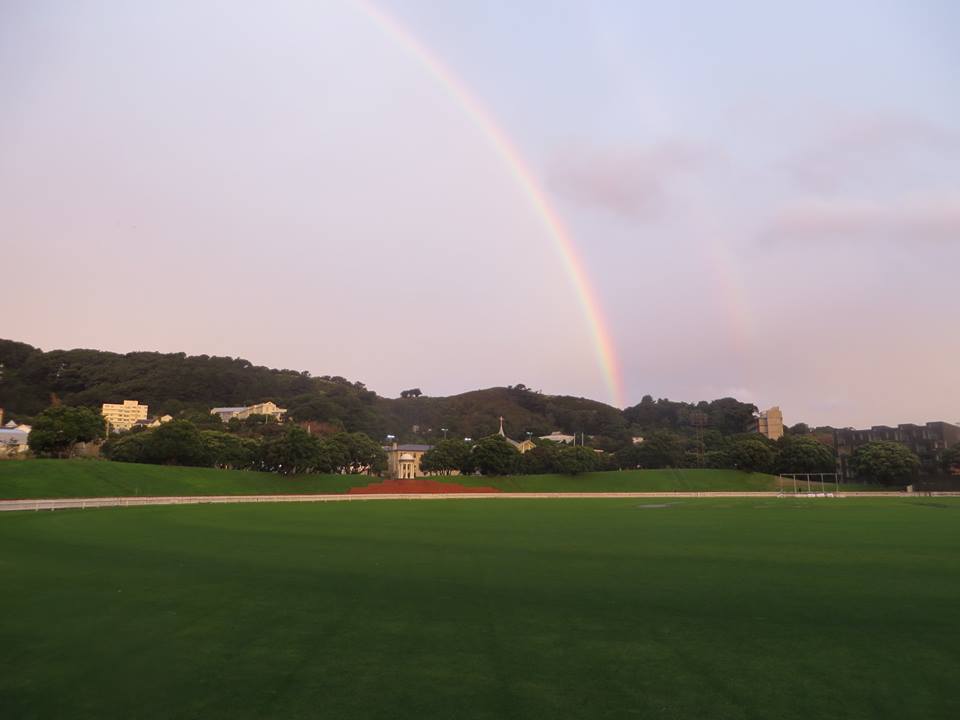
It was a typical Wellington day yesterday at the Basin Reserve. The sun shone, the wind blew, the rain fell – and then, just as the day’s proceedings at the Basin Reserve flyover Board of Inquiry finished, this beautiful rainbow crowned the day.
But the outlook for Test cricket at the Basin Reserve would be a lot less attractive if plans to build a motorway flyover along the northern and north-western boundary of the ground go ahead.
At the hearing yesterday, such distinguished formers cricketers and cricket administrators as Martin Snedden and Sir John Anderson warned of the risks the proposed flyover would pose to the future of cricket at the Basin. Martin Snedden called flyovers “hideous”, and was concerned to learn that, according to the Transport Agency’s own expert witnesses, moving traffic on the flyover would still be visible from the playing surface and to spectators even if the Transport Agency’s proposed screening options are put in place.
Spectators might vote with their feet. The International Cricket Council might withdraw the Basin’s accreditation as Test match venue. The only sure way to prevent a flyover putting the Basin’s future at risk is for the flyover not to be built.
Here is domestic and international media coverage of the day’s cricket evidence:
- ESPN Cricinfo: Traffic flyover threatens Basin Reserve: http://www.espncricinfo.com/newzealand/content/story/741855.html
- Stuff: Flyover could spell death of test cricket: http://www.stuff.co.nz/dominion-post/news/basin-reserve-inquiry/10009995/Flyover-could-spell-death-of-test-cricket
- Newstalk ZB: Fears Basin Reserve flyover could kill cricket there: http://www.newstalkzb.co.nz/auckland/news/2087991610-fears-basin-reserve-flyover-could-kill-cricket-there